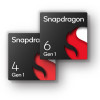Review: SnapPower Charger
Aug 1, 2016, 7:00 AM by Eric M. Zeman

The SnapPower Charger is an alternate faceplate that quickly and easily adds USB power to most any wall outlet. Here is Phonescoop's quick take.
Intro
The SnapPower Charger is a replacement faceplate for your wall outlets that adds a USB port for charging phones and other gear. Its main selling point is the ease in which it is installed and the convenience of an always-there USB outlet.
Background
Many of today's electronic devices charge via USB cable. The cables are nearly ubiquitous, but introduce a couple of headaches.
First, fewer and fewer electronic devices include an actual charger in the box. For example, the Bluetooth headphones I recently purchased have a nice USB cable in the packaging, but nothing for me to plug the cable into. The manufacturer has assumed I already have chargers laying around somewhere. The truth is I do, though they are in varying states of use.
The other headache associated with USB-based charging is that the wall chargers take up space in our finite number of outlets at home.
SnapPower believes its charger will solve both these issues. The SnapPower Charger takes but a few moments to install and instantly adds a USB port to most any outlet without any fussy wirework. Moreover, it leaves the existing sockets free for other power-hungry gear.
Installation
It takes five minutes. Maybe less. The SnapPower Charger works with both traditional and Decora (rectangular) outlet styles. It is not recommended for GFI outlets typically found in bathrooms and kitchens. SnapPower also says the Charger should not be used with outlets that have one socket controlled by a switch. The Charger comes in white, almond, and ivory, but not darker colors.
Pick an outlet and turn off the circuit breaker for that outlet. Once you've confirmed that the power is off, remove the existing faceplate. Peer inside the outlet to ensure there's space inside for the two large prongs on the back of the Charger. If the space around the outlet is crammed with multiple wires, stop and find another outlet. If the outlet has plenty of room on either side, you may proceed.
Take the SnapPower Charger and gently push it into the outlet, lining up the sockets and openings. The two metal prongs should come into contact with the lower set of screws on the inner sides of the outlet, but you can't really tell when you install the thing. (If for some reason your outlet is up-side-down — the ground prong is above the vertical slits — the Charger must be installed up-side-down, too.) Once properly aligned, tighten the screw to secure the SnapPower Charger over the outlet.
Flip the circuit breaker and you're done.
Functionality
The SnapPower Charger provides a Class 2, 5V, 1A USB port with built-in surge protection. It is tucked in the lower right side of a bulge at the bottom of the faceplate, facing sideways. This means you can't see it when you view the outlet directly. The charger works with any USB cable.

SnapPower says charging times should be equivalent to any other 1A charger, which is standard for phones (but not enough for a full tablet.) For example, the SnapPower Charger took 2 hours to charge an iPhone 6s and 3 hours to charge an iPhone 6s Plus from 0% to 100%. It does not deliver enough current for fast charging, but is safe to use with almost any device that charges via USB. For now, SnapPower says it is not going to make a 2.1A charger, nor is it looking to add more ports to the Charger faceplate.
The SnapPower Charger is sleek, which helps. I don't know about you, but many of the outlets in my 100+ year-old house are located in inconvenient spots. A majority are hiding behind dressers, beds, end tables, and the like. Snapping bulky wall worts into these outlets is often inconvenient. The SnapPower Charger has a low profile, allowing me to push furniture closer to the wall when I'm charging my gear.
Discussion
There's no doubt that the SnapPower Charger offers some convenience. I really like having a USB port built into the main outlets in my bedroom and living room, where I often charge various devices. I no longer have to worry about finding a free charger and can simply plug in the USB cable. What's more, the Charger leaves the two sockets free.

Installation is truly painless, as SnapPower claims. That's the number one reason to choose this product over alternatives that require doing actual wiring work by replacing the socket.
The price is a little on the high side. Each Charger costs $20 when purchased individually, but SnapPower offers discounts if you buy in bulk. For example, 2 chargers cost $38, 3 chargers cost $54, and 5 chargers cost $85.
Would I recommend the SnapPower Charger? Yes; it's simple to set up and works as advertised.

Comments
1A - seriously?















 Snapdragon 8 Gen 2 Redefines AI in Flagship Phones
Snapdragon 8 Gen 2 Redefines AI in Flagship Phones
 iPhone 15 Series Goes All-In on USB-C and Dynamic Island
iPhone 15 Series Goes All-In on USB-C and Dynamic Island
 iOS 16 Revamps the Lock Screen
iOS 16 Revamps the Lock Screen
 Newcomer Schok Makes Splash with Feature-Rich Phone for $169
Newcomer Schok Makes Splash with Feature-Rich Phone for $169
 Qualcomm Intros Snapdragon Chips for 2023's Mid-Range & Affordable 5G Phones
Qualcomm Intros Snapdragon Chips for 2023's Mid-Range & Affordable 5G Phones

